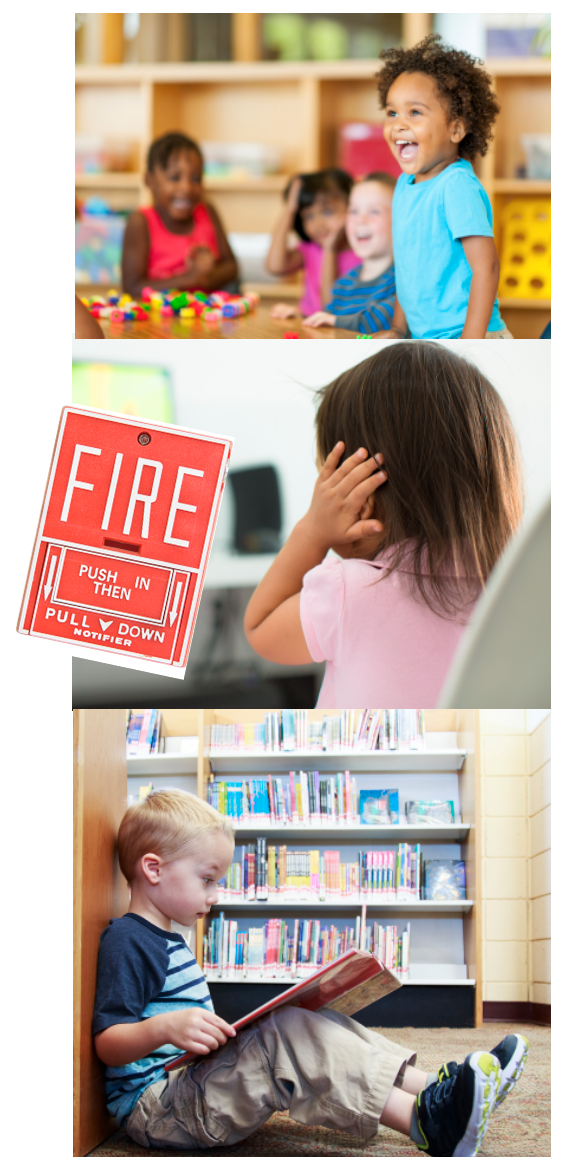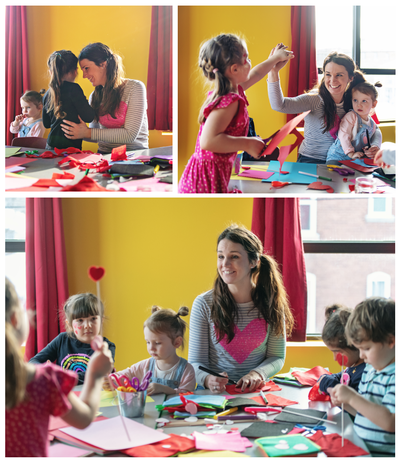Posted: February 14, 2020
Have you ever wondered why some children respond differently to the exact same event?

For example, if there is a fire drill in your classroom you probably have some children who are extremely excited, others who remain calm, and some who seem fearful. Part of the reason why children react differently to the same situation is due to their individual temperament. Understanding different individual temperaments and matching your classroom environment and interactions to support different temperaments is important and can help set your students up to be successful both academically and socially.
What is temperament?
A young child's temperament can be thought of as an early stepping-stone to their later personality and refers to how they respond and regulate themselves emotionally, behaviorally, and attentionally. Essentially, temperament consists of behaviors that you see from a child in response to a situation as well as what you might not be able to see where the child is attempting to internally regulate or control an emotional or behavioral response. While there is debate regarding the number of types of temperament, one common classification system defines children's temperaments as undercontrolled, resilient, and overcontrolled. Undercontrolled children are highly active and social but can struggle with directing attention and impulsivity. Resilient children are seen as confident, friendly, and well-adjusted. Overcontrolled children often seem withdrawn and afraid or anxious in new situations.
Temperament is shaped by our biology as well as our experiences. In other words, a child may be predisposed to respond to an event a certain way, but how they respond is also influenced by past events and how people around the child have reacted to their response. This is really important because although a child may struggle in situations due to a biological predisposition, we can still support this child, encourage self-regulation skills, and help them respond to specific situations in appropriate ways.
Why does temperament matter?
A great deal of research has established links between individual temperament in early childhood and later academic, behavioral, social, and emotional outcomes. For example, young children who struggle with attention skills and impulsivity (i.e., undercontrolled) are at an increased risk to develop externalizing problems later in childhood where they act out or are aggressive toward their peers. Young children who are extremely fearful or withdrawn (i.e., overcontrolled) are at an increased risk to develop internalizing problems like depression and anxiety. Because of the implications for healthy development that temperament carries it is important that you are able to support children in your classroom with different temperaments.
What can you do to support different temperaments?
A common theory for supporting unique temperaments is "goodness-of-fit." The main rationale behind goodness-of-fit theory is that children's development is shaped by the interaction between their own characteristics and the environment around them. Essentially there is no one-size-fits-all approach to interacting with children and the classroom environment may not impact all children the same way. For example, a loud and boisterous environment might be perfect for some children and distressful for others.
Children with undercontrolled temperaments may struggle persisting on a task and may need additional encouragement to finish before moving on to something new. These same children can benefit from reminders to take deep breaths to slow down during intense social interactions. In regard to teaching instruction, undercontrolled children often appreciate the opportunity to do a hands-on activity, as opposed to something where they are required to sit quietly for an extended period of time. Conversely, children with overcontrolled temperaments may need reassurance when encountering something new. Providing them with gentle encouragement toward attempting a new task can be effective in helping them engage in the situation. These children may also enjoy teaching activities where they are able to interact with you in a one-on-one setting in a quieter environment.
 While altering your interactions to individual children might seem like a tall task, if you are able to get to know each of your students and recognize that they all have unique strengths and challenges, you will be able to adapt your interactions and teaching style effectively to support each child and set them up to be successful.
While altering your interactions to individual children might seem like a tall task, if you are able to get to know each of your students and recognize that they all have unique strengths and challenges, you will be able to adapt your interactions and teaching style effectively to support each child and set them up to be successful.
For more information on understanding temperament and goodness-of-fit check out the following Better Kid Care modules:
- Foundations of Child Development for Child Care Center Teachers
- How to Work with Active Children
- Infant-Toddler Care: Guiding Behavior
- Preschool Foundations: Nurture Interactions and Guide Behaviors
- See as a Child, Feel as a Child
- Understanding Toddlers
Download a PDF of this article to share with others!
Article by Benjamin Bayly.

